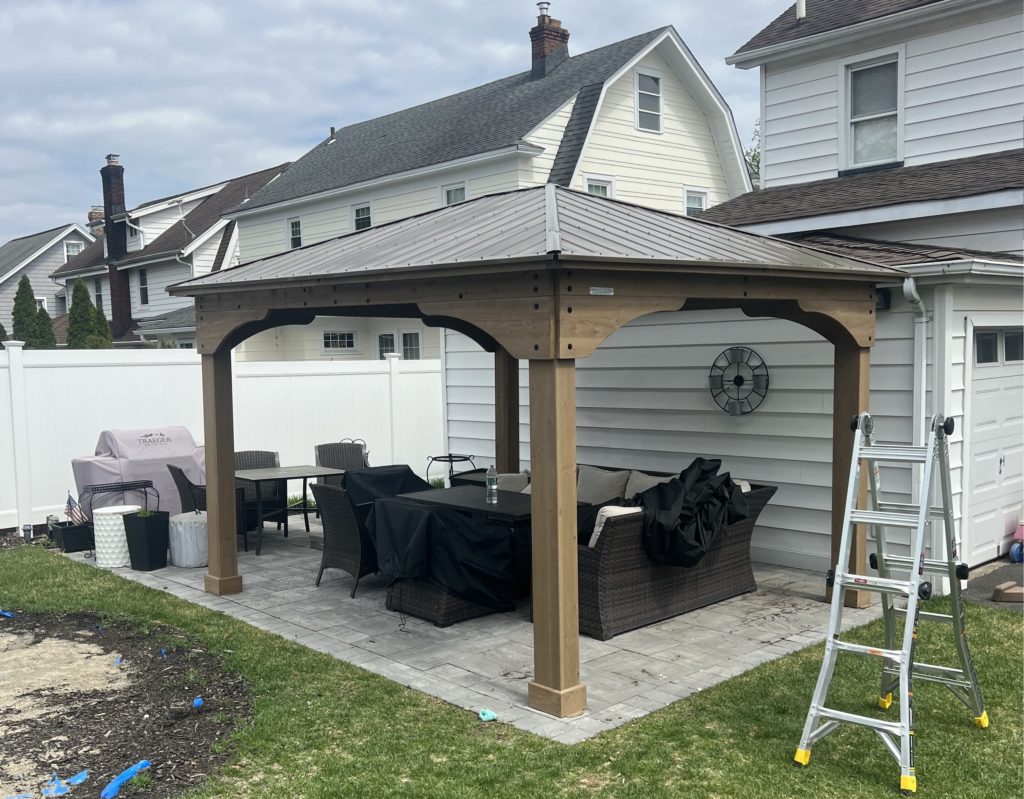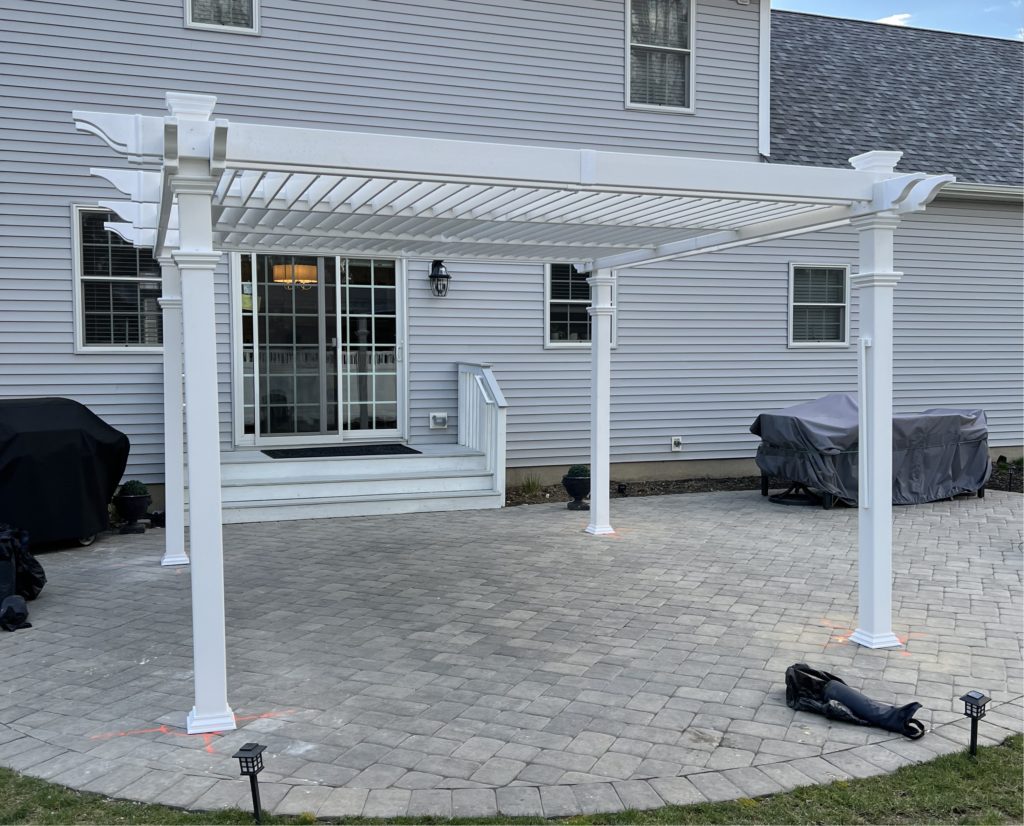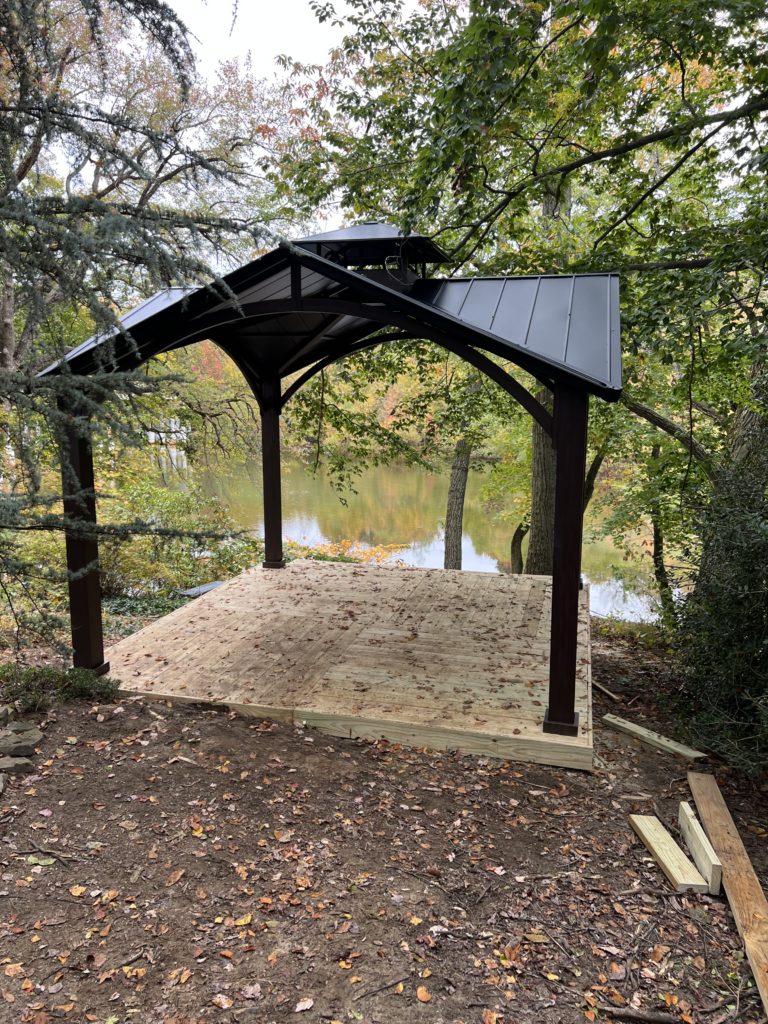Having a ceiling fan in your home can provide numerous benefits, from improving air circulation to reducing energy costs. If you’re in Flanders, NJ, and looking for professional ceiling fan installation, replacement, or repair services, you’re in luck. Our team of experts is here to assist you with all your ceiling fan needs.
OUR CONTACT
Email Support:
info@gazebo-installation.com
Ask your question:
info@gazebo-installation.com
Some of Our Portfolio Gazebo and Pergola Assembly Projects



When it comes to ceiling fan installation, it’s essential to hire a skilled professional to ensure the fan is properly installed and securely mounted. Our team has extensive experience in installing ceiling fans of all brands and models. We will safely connect the wiring, securely mount the fan, and test it to ensure it operates efficiently.
If your existing ceiling fan is showing signs of wear and tear or simply no longer providing the performance you desire, our experts can assist you with a prompt replacement. We can help you choose a new ceiling fan that fits your style and budget, and then efficiently replace your old fan with the new one.
Moreover, if you’re experiencing issues with your ceiling fan, such as it not running smoothly, making excessive noise, or having problems with the motor, our team can provide reliable repair services. We will diagnose the problem and offer cost-effective solutions to get your ceiling fan back in optimal working condition.
Don’t let a malfunctioning or outdated ceiling fan compromise the comfort and aesthetics of your home. Contact us today to schedule your ceiling fan installation, replacement, or repair service in Flanders, NJ, and let our experts help you enjoy the benefits of a properly functioning ceiling fan.
Ceiling Fan Installation: Tips and Tricks for a Perfect Setup
Installing a ceiling fan can be a great way to enhance the comfort and aesthetics of any room. Whether you are replacing an old fan or installing a new one, proper setup is crucial for optimal performance. Here are some tips and tricks to ensure a perfect installation.
1. Choose the Right Location
Before starting the installation process, carefully choose the location for your ceiling fan. Make sure it is placed in an area that will provide maximum air circulation and comfort. The ideal location is typically in the center of the room, with the blades at least 18 inches away from any walls or obstructions.
2. Check the Wiring
One of the most important steps in ceiling fan installation is checking the wiring. Ensure that the electrical box in the ceiling is rated to support the weight of the fan and is securely fastened. Additionally, make sure you have the necessary electrical wiring knowledge and tools to safely connect the fan to the existing wiring.
3. Assemble the Fan Properly
Follow the manufacturer’s instructions to assemble the ceiling fan correctly. Make sure all the parts are securely attached and tightened. This includes properly installing the fan blades, light fixture (if applicable), and any other accessories. Skipping or incorrectly assembling any parts can lead to noise, wobbling, or poor function of the fan.
4. Test for Balance and Noise
Once the ceiling fan is installed, turn it on and check for any wobbling or noise. If the fan is wobbling, use a balancing kit, typically provided by the manufacturer, to adjust and stabilize it. Noise can be an indication of loose parts or insufficient lubrication. Ensure all screws and connections are tight and lubricate any moving parts as recommended by the manufacturer.
5. Enjoy the Benefits
After proper installation and testing, sit back and enjoy the benefits of your ceiling fan. Not only will it provide a refreshing breeze during hot summer days, but it can also help to distribute heat in the winter and reduce energy costs. Take advantage of the different speeds and adjustable settings to create the perfect atmosphere in your living space.
Choosing the Right Ceiling Fan: Factors to Consider
When it comes to installing or replacing a ceiling fan in your home or office in Flanders, NJ, it is essential to choose the right one that suits your needs and preferences. With a wide range of options available in the market, it can be overwhelming to make a decision. However, considering a few factors can help you make an informed choice.
1. Size: The size of the room plays a crucial role in determining the size of the ceiling fan you should choose. For smaller rooms, a fan with a blade span of 36 to 42 inches would suffice. For larger rooms, opt for a fan with a blade span of 52 inches or more to ensure proper circulation of air.
2. Style: Ceiling fans come in a variety of styles, ranging from modern and contemporary to traditional and rustic. Consider the overall theme and decor of your space to select a fan that complements the aesthetics. Whether you prefer a simple and sleek design or a more ornate and decorative one, there is a fan style for every preference.
3. Energy Efficiency: Look for ceiling fans with the ENERGY STAR label, as they are designed to meet strict energy efficiency guidelines. These fans consume less energy while providing the same cooling effect, helping you save on your energy bills in the long run.
4. Noise Level: No one wants a noisy ceiling fan interfering with their daily activities. When choosing a fan, consider its noise level ratings. Opt for fans with quieter motors and blade designs that minimize noise, ensuring a peaceful and comfortable environment.
5. Additional Features: Some ceiling fans come with additional features such as remote controls, adjustable speeds, reverse mode, and built-in lighting. Depending on your preferences, these features can enhance the functionality and convenience of your fan. Consider if you want these added features to enhance your overall experience.
By considering these factors, you can choose the right ceiling fan that not only provides efficient air circulation but also enhances the aesthetics of your space in Flanders, NJ. Consulting with a professional ceiling fan installation and repair service can also help you make the best choice based on your specific needs and requirements.
Step-by-Step Guide to Installing a Ceiling Fan
Installing a ceiling fan can be a great way to improve air circulation and add a stylish touch to any room. If you’re looking to install a ceiling fan in your home in Flanders, NJ, follow this step-by-step guide to ensure a successful installation.
Step 1: Gather Your Tools and Materials
Before you begin, make sure you have all the necessary tools and materials on hand. This may include a ladder, screwdriver, wire stripper, electrical tester, pliers, and the ceiling fan kit. Be sure to read the manufacturer’s instructions to familiarize yourself with the specific requirements for your fan.
Step 2: Turn Off the Power
- Begin by turning off the power to the room where you’ll be installing the ceiling fan. Locate the appropriate circuit breaker in your electrical panel and switch it off.
- It’s always a good idea to use an electrical tester to double-check that the power is truly off before you proceed with any electrical work.
Step 3: Remove the Existing Light Fixture
- Carefully remove the existing light fixture from the ceiling by unscrewing the screws that hold it in place. Disconnect any electrical wires connecting the fixture to the ceiling.
- If there is no existing light fixture, you may need to install a ceiling fan-rated junction box to provide support for the fan. Consult the manufacturer’s instructions for guidance.
Step 4: Assemble the Ceiling Fan
- Follow the manufacturer’s instructions to assemble the ceiling fan. This typically involves attaching the fan blades, motor, and any additional components.
- Ensure that all connections are secure and that any wires are properly routed according to the instructions.
Step 5: Mount the Ceiling Fan
- Align the fan’s mounting bracket with the electrical box, securing it in place with the provided screws.
- Carefully lift the assembled fan and connect the wiring from the fan to the corresponding wires in the electrical box, using wire nuts to secure the connections.
- Carefully tuck the wires into the electrical box, making sure they are not pinched or damaged by the fan or mounting bracket.
Step 6: Attach the Fan Blades and Test
- Attach the fan blades to the motor using the provided screws and tighten them securely.
- Once everything is securely in place, turn the power back on at the electrical panel and test the fan to ensure it operates properly.
- If any issues arise, refer to the manufacturer’s troubleshooting guide or consult with a professional.
Congratulations! You have successfully installed your ceiling fan. Enjoy the improved air circulation and comfort it provides in your Flanders, NJ home.
Common Mistakes to Avoid During Ceiling Fan Installation
Installing a ceiling fan can be a great way to improve air circulation and energy efficiency in your home. However, it’s important to proceed with caution and avoid common mistakes that can lead to improper installation and potential hazards. Here are some common mistakes to avoid during ceiling fan installation:
1. Neglecting to turn off the power
One of the most important steps in any electrical installation is to turn off the power. Failing to do so can lead to electric shock or damage to the fan and other electrical components. Before starting the installation process, ensure that the power to the circuit is turned off at the breaker box.
2. Using improper wiring techniques
Proper wiring is crucial for the safe and efficient operation of a ceiling fan. It’s essential to follow the manufacturer’s instructions and use the correct wire connectors to secure the connections. Avoid loosely twisted wires or using electrical tape alone to connect the wires.
3. Overlooking weight and support
Before installing a ceiling fan, it’s important to assess whether the existing electrical box and support structure can safely handle the weight of the fan. Using an insufficient or improper support system can lead to a fan falling from the ceiling and causing damage or injury. If necessary, consult a professional for advice on the proper support for your specific fan model.
4. Failing to balance the fan
An unbalanced ceiling fan can produce excessive noise and vibration, which can be annoying and reduce the lifespan of the fan. Take the time to properly balance the fan blades using a balancing kit or by adjusting the positioning of the blades. This will ensure quiet and efficient operation.
5. Poor placement and clearance
When installing a ceiling fan, it’s important to consider the clearance requirements to prevent any obstructions and allow for proper airflow. Avoid placing the fan too close to walls or ceilings, which can disrupt its performance. Additionally, make sure the fan blades are at least 7 feet above the floor and away from any light fixtures or other objects.
By avoiding these common mistakes, you can ensure a safe and effective ceiling fan installation. If you’re unsure about any aspect of the installation process, it’s always best to consult a professional to ensure the job is done correctly.
OUR CONTACT
Email Support:
info@gazebo-installation.com
1126 Falls Terr, Union NJ 07083
Ask your question: info@gazebo-installation.com